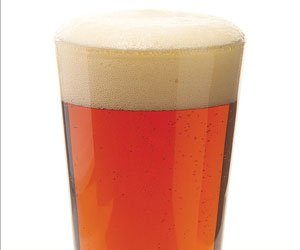Rosemary IPA
I have an alter ego, a secret identity, in short a day job. I’m a high-school French teacher. Pretty mundane, sometimes, but that’s one of the reasons I make my own beer. It’s also one of the reasons I am able to make my own beer — time. A teacher’s schedule is wonderful.
I have had time to read some wonderful French literature, too. One book I enjoyed was Marcel Proust’s A La Recherche du Temps Perdu (Remembrance of Things Past).
What does this have to do with homebrewing? Not much. Except that one of the few things that many people know about Proust’s multi-volume opus is the scene where he explains how a taste or an odor can trigger memories of events, people, and scenes. He’s eating a madeleine (a bland French cookie), and it launches him into narrating his coming of age, his life in society, his loves, and his losses.
The same thing happens to me with beer. Certain beers are associated in my mind with certain periods of my life, with people, with places. Other tastes and aromas, outside of beer, work as well, of course, but they don’t fit as neatly into a column about homebrewing. Except this one: rosemary.
My wife and I have tried several times to grow rosemary. We buy a healthy young plant and plop it in the ground. It grows all summer, triples in size, but then dies back to nothing and never comes back the next spring. Every year we say that we’ll mulch it differently and take better care of it, but every year we have to buy a new one. We’ve also tried to keep it inside, but our house is either too humid or too dry. We’re not sure which. The thing is, the smell (and taste) of rosemary is one of those amazing memory joggers for me. The stuff grows wild in Mediterranean climates. In Provence, in the south of France, it grows taller than people. Every time I smell rosemary or eat something cooked with it, I am transported to a hillside overlooking the Riviera.
I wondered if it would work as an adjunct in brewing. It’s not too far removed from spruce and pine aromas (which are sometimes used in beer). So I bought another rosemary plant, grew it all summer, and then cut it and dried it and brewed a rich amber ale to celebrate the harvest. I used my dried, homegrown rosemary as a flavoring hop and then dry hopped with it in the secondary to boost the aroma. And the rest is (literary) history.
Rosemary IPA
(5 gallons/19 L, partial mash)
OG = 1.062 FG = 1.014
IBU = 52 SRM = 9 ABV = 6.5%
Ingredients
4 lbs. (1.8 kg) pale malt
0.5 lb. (0.23 kg) toasted pale malt (toast on a cookie sheet for 15 min. at 350° F)
0.5 lb. (0.23 kg) medium crystal malt (50 to 60° L)
4.5 lbs. (2 kg) extra light dried malt extract
6 AAU Chinook hops (90 min.) (0.5 oz./14 g at 12% alpha acids)
4 AAU Willamette hops (90 min.) (1 oz./28 g at 4% alpha acids)
8 AAU Goldings hops (5 min.) (2 oz./57 g at 4% alpha acids)
2 oz. (57 g) dried rosemary leaves: 1.5 oz. (43 g) for 60 min., 0.5 oz. (14 g) for secondary
English ale yeast slurry (Wyeast 1098 or equivalent)
3/4 cup corn sugar (if priming)
Step by Step
Heat 2 gal. (7.6 L) water to 162 °F (72 °C), crush the grains and add to water in your mash tun. Hold at 150 °F (66 °C) for 90 min. Wash the grains with 2.5 gal. (9.5 L) of 170 °F (77 °C) water.
Stir in light DME, then bring to a boil. Total boil is 90 min. Add Chinook and Willamette hops and boil 30 min. Add 1.5 oz. (43 g) rosemary and boil 45 min. Add the Goldings hops, boil 15 min., then remove from heat. Cool and top up to 5.25 gal. (20 L) with water. Pitch yeast at 68 to 70 °F (20 to 21 °C).
Ferment warm (65° to 70 °F/18 to 21 °C) for eight to 10 days. Rack to secondary and add the 0.5 oz. (14 g) rosemary. Condition cooler (50 °F/10 °C) for two to three weeks, then return to warm place for a week. Remove rosemary, prime and bottle, or keg and force carbonate.
Notes:
Extract: Omit the pale malt. Steep the toasted malt and the crystal malt, as above, in 2.5 gal. (9.5 L) of 150 °F (66 °C) water for 30 min. Remove grains and bring to a boil. Increase the DME to 6.75 lbs. (3.1 kg), proceed with the boil as above.
All-grain: Omit the DME. Mash 12.5 lbs. (5.7 kg) pale malt, along with the toasted malt and crystal malt as above, in 4.5 gal. water (17 L). Sparge with 4 gal. (15.1 L) of water. Proceed with boil as above, timing it to evaporate down to 5.25 gal (20 L)


